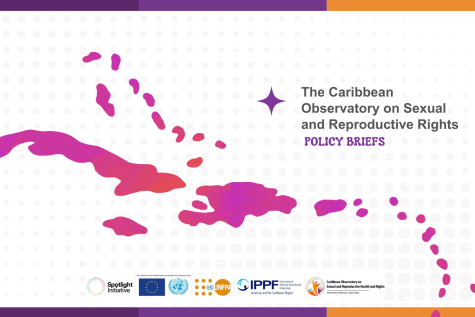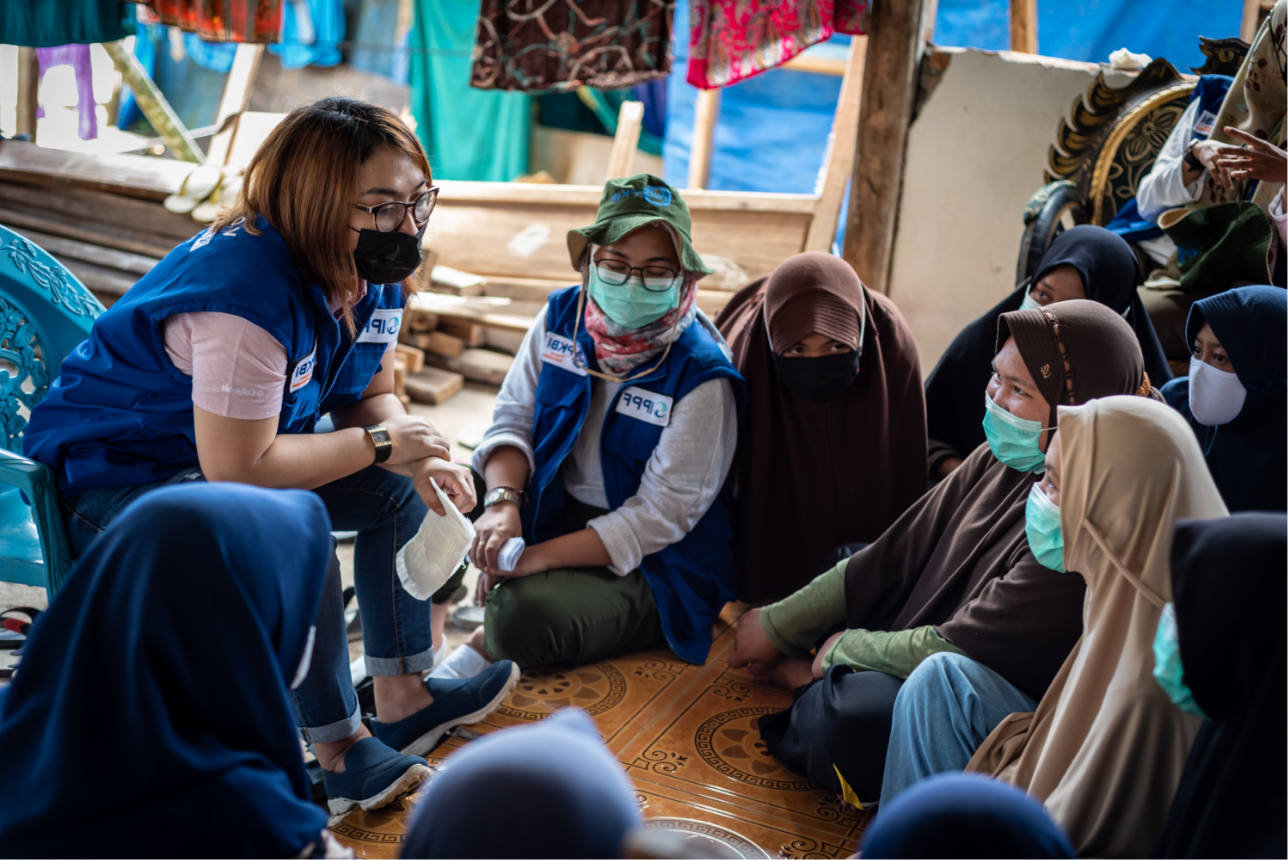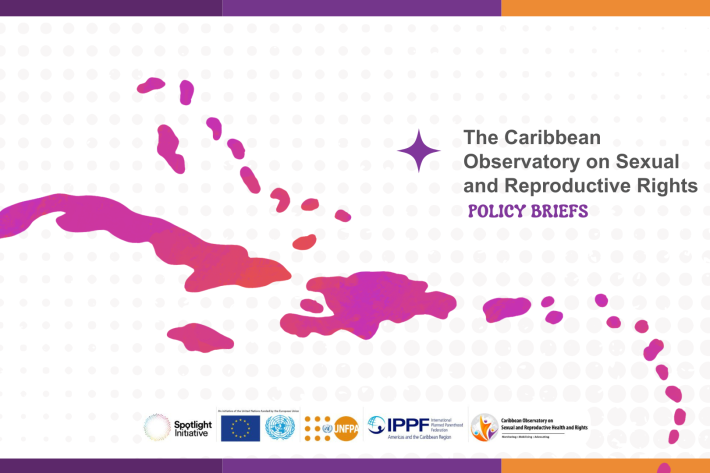Spotlight
A selection of resources from across the Federation

Americas & the Caribbean
Caribbean Observatory on SRHR: Policy Briefs
Data and Advocacy critical to shaping SRHR in the Caribbean
Filter our resources by:


| 05 June 2017
Financial Statements 2016
2016 saw the implementation of IPPFs new strategic plan and therefore was a year of transition for the Secretariat as operations were aligned to focus on the new outcomes. The strategy responds to social, political and demographic global trends. These include: the expectations and potential of the largest ever generation of young people; ongoing, significant social and economic inequalities, including discrimination against girls and women; and opposition that threatens gains in human rights. We continue to receive funding from and are grateful for the continued support of our key funders. With their support and help our unrestricted funding increased in the year to US$76.7 million from US$72.2 million. This was in spite of the United Kingdom’s decision to leave the European Union in June, which led to the weakening of sterling and Euro against the dollar and reduced our dollar income from our European donors. Restricted income increased from US$44.1 million to US$53.7 million. A significant factor in the increase was the US$10 million received from the David and Lucile Packard Foundation to enable IPPF to respond to the Zika crisis in the Western Hemisphere Region. The amount of grants to Member Associations (MAs) and partner organizations was US$68.3 million. Central expenditure decreased by US$2.9 million to US$16.1 million mainly due to the weakening of sterling whereas Regional expenditure remained consistent with the prior year at US$34.0 million (a US$0.4 million decrease on 2015).
| 17 June 2016
Financial Statement 2015
IPPF’s total income has fallen by US$10.0 million from US$126.2 million to US$116.2 million. This reduction is due to a fall in unrestricted government income of US$5.8 million, a reduction of restricted government income of US$6.2 million and reduced donations in kind of US$0.6 million offset by an increase in restricted grants from multilaterals of US$4m with the balance of US$0.9 million decrease in other income and trading activities. The total decrease is split between restricted and unrestricted funds by US$2.3 million and US$7.6 million respectively. With the exception of Norway and Japan, all government (more significantly Australia and Sweden) donors have held level or increased their unrestricted funding to IPPF in the donor currency. However the strengthening of the US dollar has had a significant impact, effectively reducing US dollar unrestricted income by approximately 14% on a like for like basis compared to 2014. Total expenditure has decreased from US$137.5 million to US$131.8 million. Unrestricted expenditure has risen from US$84.2 million to US$85.6 million while restricted expenditure has fallen from US$53.3 million to US$46.2 million. The increase in unrestricted expenditure is driven by an exchange loss (US$1.9 million) and the use of US$8.9m designated funds to provide support in a number of areas: support in South Asia for system strengthening (US$2.3m); support for resource mobilization at regional and central level (US$1.5 million); campaign and advocacy for UN Liaison office (US$0.9 million); scale up fund for SGBV support to MAs (US$0.5 million); contingency spend on various activities (US$0.4 million). Restricted expenditure levels are driven by the timing of donor funded programmes, which vary on a year-by-year basis. This has resulted in an unrestricted net operating expenditure of US$13.4 million before other unrecognized gains and losses and a restricted deficit of US$2.1 million, to generate a total operating deficit of US$15.6 million. After taking into account actuarial gain on the defined benefit pension scheme and investment losses the resulting net movement in funds was a reduction of US$13.6 million. The level of unrestricted income received was approximately US$4 million less than forecast primarily due to the strength of the US dollar versus donor currencies and the expenditure in excess of income levels was funded using approved designated funds (US$2m million). This resulted in a decrease in general reserves to US$21.9 million and a fall in designated reserves to US$73.3 million.

| 15 June 2016
El Salvador: A study on legal barriers to young people’s access to sexual and reproductive health services
The prohibition of abortion in El Salvador is an example of a direct legal barrier to SRH access. However many of the barriers are indirect, resulting from: conflicting interpretations and perceptions of the law relating to age of consent, parental consent and provision of services prevailing cultural norms, stigma, shame, and taboo around youth sexuality lack of confidence in confidentiality myths about contraception and lack of accurate education about sexuality lack of positive legal protection of young people’s rights and LGBT rights discretionary and therefore uneven implementation of those protective and facilitative laws that do exist the culture of machismo, gender discrimination and the prevalence of gender-based and sexual violence Includes: Implications for law and policy on a broad range of factors impacting access

| 17 June 2015
Financial Statement 2014
Financial Statements for 2014 Executive Summary IPPF’s total income has fallen by US$10.0 million from US$136.1 million to US$126.1 million. This reduction is due to a fall in unrestricted government income of US$2.2 million, a reduction of restricted government income of US$8.0 million and reduced donations in kind of US$2.2 million offset by an increase in restricted grants from multilaterals of US$2.9 million. The total decrease is equally split between unrestricted and restricted income at US$5 million each. With the exception of Australia, all government donors have held level or increased their unrestricted funding to IPPF in the donor currency. However the strengthening of the US dollar has had a significant impact, effectively reducing US dollar unrestricted income by approximately 9% on a like for like basis compared to 2013. Total expenditure has risen from US$132.8 million to US$137.6 million. Unrestricted expenditure has risen from US$76.8 million to US$84.3 million while restricted expenditure has fallen from US$56.0 million to US$53.3 million. The increase in unrestricted expenditure is driven by an exchange loss (US$3.6 million) and the use of designated funds to provide support in a number of areas: support in South Asia for system strengthening (US$1.7 million); provision of support to Member Associations (MAs) to scale up services (US$0.9 million); development of the new strategic framework (US$0.4 million); international advocacy and supporting IPPF Vision 2020 campaign to place sexual reproductive health (SRH) and rights at the centre of the sustainable development agenda (US$0.8 million); and support for resource mobilization at a regional and central level (US$1.4 million). Restricted expenditure levels are driven by the timing of donor funded programmes, which vary on a year-byyear basis. This has resulted in an unrestricted deficit of US$4.6 million before other unrecognized gains and losses and a restricted deficit of US$6.9 million, to generate a total operating deficit of US$11.5 million. After taking into account actuarial losses on the defined benefit pension scheme the resulting net movement in funds was a reduction of US$15.1 million. The level of unrestricted income received was as forecast in the 2014 budget and the expenditure in excess of income levels was funded using approved designated funds (US$6.4 million). This resulted in a small increase in general reserves to US$24.0 million and a fall in designated reserves to US$85.9 million. "The unrestricted funding that our major donors have provided to us over the long term has enabled the Federation’s Member Associations to build sustainable programmes of delivery and advocacy impacting positively the lives of millions of people."
| 10 May 2012
IPPF Financial Statement 2010
Financial statements for 2010 include an executive summary; the report of the Governing Council; the report of the independent auditors to the Governing Council; financial activities; balance sheets; cash flow statement; and notes to the financial statements.

| 04 May 2012
IPPF Financial Statement 2009
Financial statements for 2009 include an executive summary; the report of the Governing Council; the report of the independent auditors to the Governing Council; financial activities; balance sheets; cash flow statement; and notes to the financial statements.












